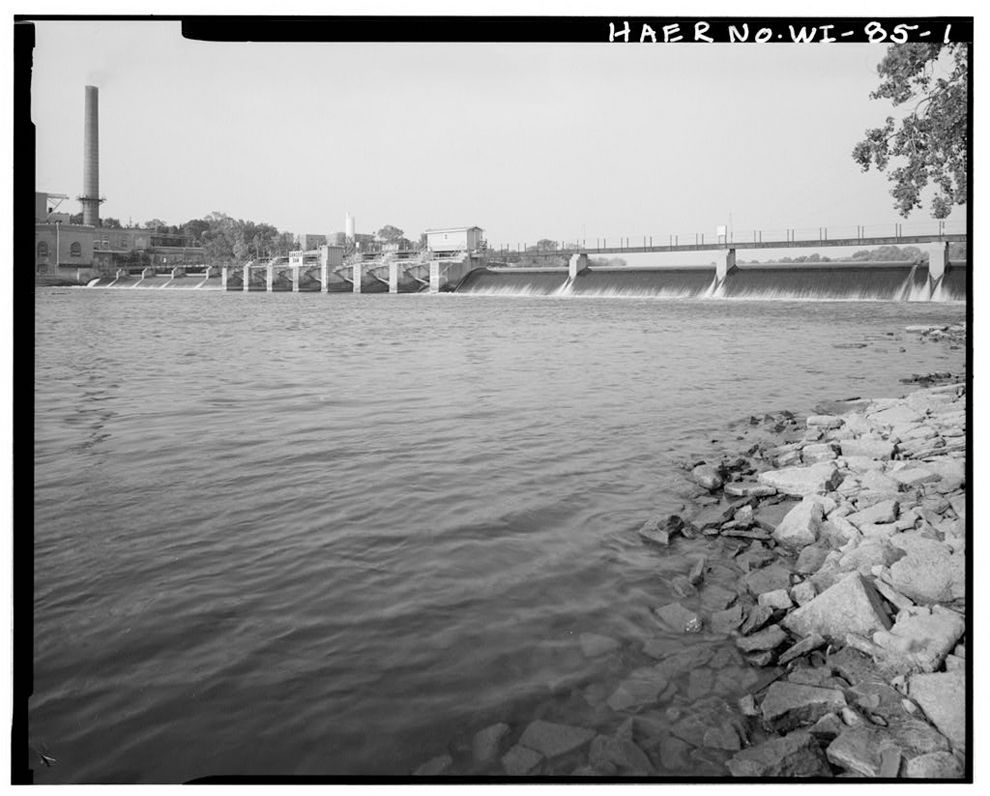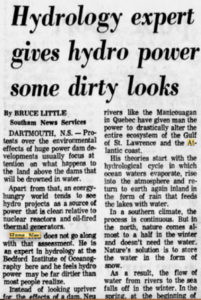History
Hydropower can be traced back to over two thousand years. In its simplest form, the Chinese, during their Han dynasty, used falling water powering tilt hammers to process grains, ores, and paper. The ancient Greeks created waterwheels for similar purposes around the same time.
It was not until the First Industrial Revolution that modern hydropower took shape. The year 1827 brought about invention of the turbine by French engineer, Benoit Fourneyron. In 1831, Michael Faraday created the first electric generator. The combination thereof with modifications and improvements over 50 years later, in 1882, resulted in the first hydroelectric power plant opened in Appleton, Wisconsin, powering a paper mill and two other buildings. This event, unknown to those at the time, would cause the advent of numerous environmental and social debacles. We will go over these issues in the Geographic and Social Costs section.

Hydroelectric power plants sprung up like weeds around the turn of the 20th century and continued to experience significant construction growth throughout the mid-1900’s, all over the world. By the 1970’s, people began to rally against the unregulated expansions of these projects. People like Dr. Hans Neu (pronounced Noy).
Sources:
1. https://www.hydropower.org/a-brief-history-of-hydropower
2. https://energyinformative.org/the-history-of-hydroelectric-power/
3. http://citeseerx.ist.psu.edu/viewdoc/download?doi=10.1.1.695.3520&rep=rep1&type=pdf
4. https://www.nationalgeographic.org/thisday/sep30/first-hydroelectric-plant-opens/
5. https://en.wikipedia.org/wiki/Hydroelectric_power_in_the_United_States
Dr. Hans Neu
Dr. Hans Neu was a German engineer and oceanographer who, ahead of his time, predicted how the storage of water in reservoirs and the eventual release back into the environment, disrupts the natural seasonal hydrological cycle. Before we delve into his work, it is important to get a picture of his background and the reasons why his voice still resonates today.
"You know, it seemed to me that what he was doing should be done. It was very exciting. It's looking at a process, and raising an alarm. We should be careful and see what the implications are because--and [for] all of these environmental issues--it's always a matter of a balance. Hans, you know, I think was bang on to raise these issues."
Donald Gordon, Scientist Emeritus at the Bedford Institute of Oceanography, former colleague of Neu's
Before migrating to Canada in the early 1950’s, Neu worked as a mechanical engineer on small low-head rivers and the building of dams in Germany. Due to increasing political turmoil at home, he and his wife migrated to Canada where Hans soon worked for the National Research Council (NRC) in Ottawa: the scientific research wing of Canadian government. In that era of marine research in Canada, the country lacked research professionals and would often hire those from overseas, namely Europe.
During his time at the NRC, Neu was responsible for helping design construction variations and flows through the Saint Lawrence River waterways to bypass obstructed sections. Another major project he was tasked with was recommending changes to a Fraser River tidal project for deep-sea navigation that had been switching hands between the University of British Columbia, the British Columbia Department of Public Works, and private industry. In both of these experiences, politics limited the scope of Neu’s attempts to ameliorate project impacts on the environment. Lacking freedom and feeling frustrated, Neu decided to work at the Bedford Institute of Oceanography (BIO), a newly-funded research institute based in Darthmouth, Nova Scotia. Neu worked at BIO until the day he retired.
The BIO chapter of Hans Neu’s career allowed him to conduct research across different branches of oceanography and allowed him to research further and wider. Some of these areas include: improving the layout of the Halifax harbor, the hydrodynamics of Chedabucto Bay, decade-long investigations into the wave action climate of the Atlantic Ocean, sedimentation in Rivière-au-Tonnerre, and even ice drift in the Arctic. Through meticulous online queries, visits to BIO and the NRC, we have acquired much of Neu’s research for your perusal below.
Based on his years of dam design and construction work in Germany and his extensive research across Canada, Neu’s understanding of environmental ramifications from oceanographic and riverine engineering projects grew and he became passionate about how environmental condemnation costs from these projects outweighed the benefits. Beginning in the 1960’s, Neu turned to the press and wrote a number of research papers about the effects of hydropower runoff (which you can read below): Man-Made Storage of Water Resources—A Liability to the Ocean Environment? Part I & II and Runoff Regulation for Hydro-Power and its Effect on the Ocean Environment.

Chief amongst his concerns were the cascading effects of what seasonal discharges of reservoir water back into the environment would cause: aggravating water temperature levels, water salinity affecting boundary mixing in estuaries, sediment deposition changing spawning rates for fish, and the lack of nutrients causing wide-spread, complete trophic level disturbances.
Neu’s work across oceanography and marine research has been used as primary-sourced literature for scientists and as historical records for subsequent work. He has been cited in the seminal Silenced Rivers: The Ecology and Politics of Large Dams by Patrick McCully. Until the end, Hans Neu was an adamant dissenter of hydropower damming, particularly large-scale projects. Neu’s prescient voice foretold serious issues we face today including habitat destruction, fisheries collapse and climate change.
| Name | Downloads | File Size |
|---|---|---|
| Name | Downloads | File Size |
| 682 downloads | bytes | |
| 685 downloads | bytes | |
| 643 downloads | bytes | |
| 611 downloads | bytes | |
| 633 downloads | bytes | |
| 635 downloads | bytes | |
| 554 downloads | bytes | |
| 596 downloads | bytes | |
| 629 downloads | bytes | |
| 575 downloads | bytes | |
| 590 downloads | bytes | |
| 613 downloads | bytes | |
| 589 downloads | bytes | |
| 601 downloads | bytes | |
| 570 downloads | bytes | |
| 594 downloads | bytes | |
| 537 downloads | bytes | |
| 545 downloads | bytes | |
| 553 downloads | bytes | |
| 551 downloads | bytes | |
| 543 downloads | bytes | |
| 555 downloads | bytes | |
| 526 downloads | bytes | |
| 517 downloads | bytes | |
| 489 downloads | bytes | |
| 478 downloads | bytes | |
| 518 downloads | bytes | |
| 534 downloads | bytes | |
| 537 downloads | bytes | |
| 520 downloads | bytes | |
| 543 downloads | bytes | |
